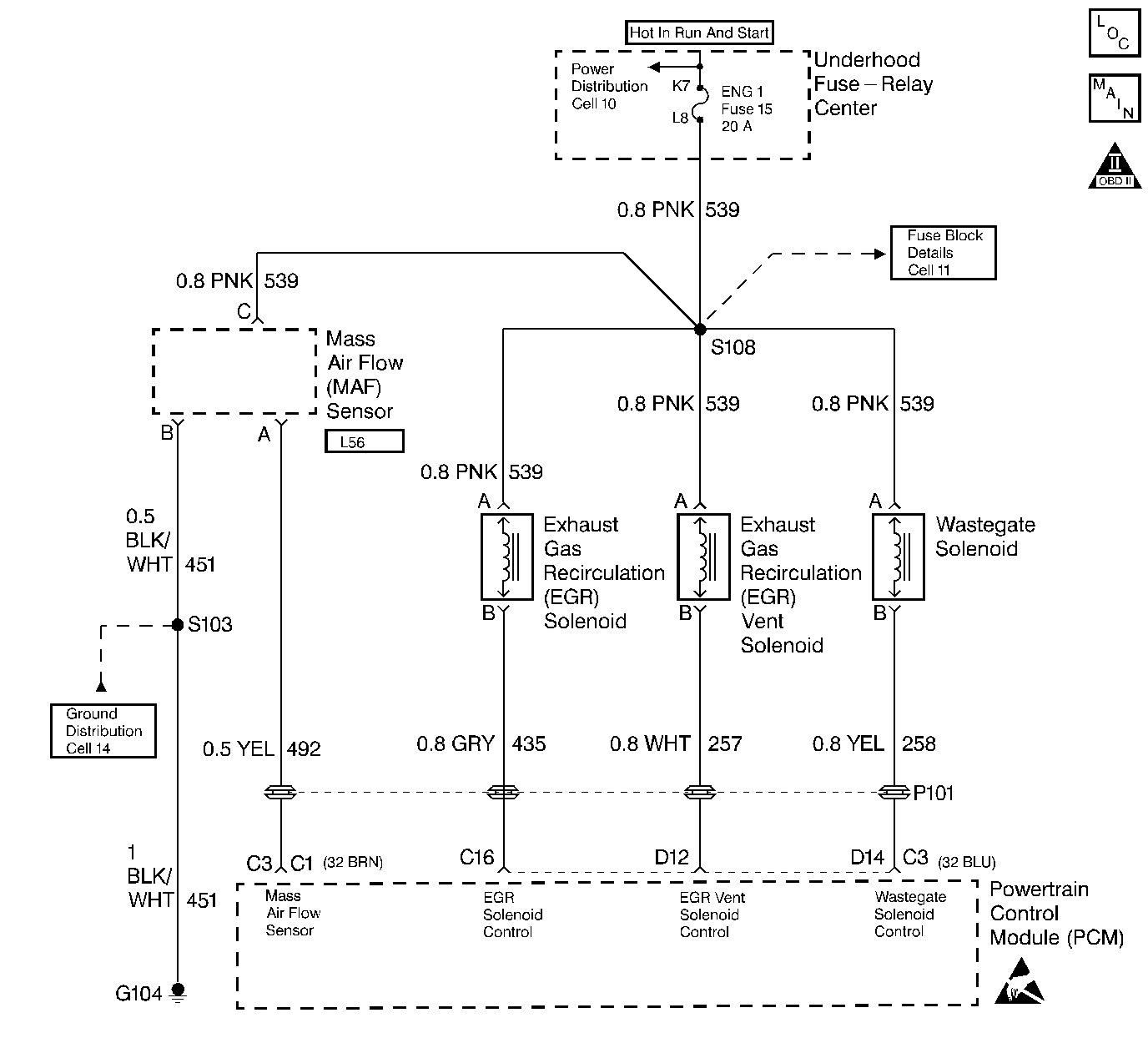
Circuit Description
The PCM operates a solenoid to control the EGR valve. This solenoid is normally open. By providing a ground path the PCM energizes the solenoid which then allows vacuum to pass to the EGR vlave. During normal operation, the PCM compares its desired EGR signal with the EGR pressure signal and makes corrections in the duty cycle accordingly. If there is a difference in the PCM command and what is at the EGR valve sensed by the EGR control pressure/BARO sensor, the PCM makes minor adjustments to correct.
Conditions for Setting the DTC
| • | DTCs P0405, P0406, P0102 and P0103 are not set. |
| • | All EGR tests have been completed (internal to PCM). |
| • | Measured EGR pressure unchanged. |
Action Taken When the DTC Sets
The PCM will shut down the EGR.
Conditions for Clearing the MIL/DTC
| • | The PCM will turn the MIL off after three consecutive trips without a fault condition. |
| • | A History DTC will clear when forty consecutive warm-up cycles that the diagnostic does not fail (coolant temperature has risen 5°C (40°F) from start up coolant temperature and engine coolant temperature exceeds 71°C (160°F) that same ignition cycle. |
| • | Use of a Scan Tool |
Diagnostic Aids
A vacuum leak or a pinched vacuum will cause a DTC P0404. Check all vacuum lines and components connected to the hoses for leaks or sharp bends or deformities. Check vacuum source to EGR solenoid assembly. Also check for small leak in EGR valve, and proper vacuum line routing.
To run the diagnostic test the engine must be at operating temperature, vehicle in drive at idle for approximately 1 minute, the with vehicle in park hold engine rpm steady between 1500 and 2100 rpm for 30 seconds. If the diagnostic test fails to run, vehicle must be driven.
The Adaptive Learn Matrix (ALM) is used to adjust the EGR vacuum control based on Mass Air Flow (MAF). The ALM may change as a result of back pressure increases over the life of the vehicle or other engine system variations. The ALM is made up of sixteen cells (numbered from zero to fifteen) in which each cell covers a range of engine speed (RPM) and load (mm3).
Test Description
Number(s) below refer to the step number(s) on the Diagnostic Table.
Step | Action | Value(s) | Yes | No |
|---|---|---|---|---|
1 |
Important: Before clearing DTCs use the scan tool Capture Info to record freeze frame and failure records for reference, as data will be lost when Clear Info function is used. Was the Powertrain On-Board Diagnostic (OBD) System Check performed? | -- | ||
2 |
Is vacuum greater than the specified value? | 15 in. Hg | ||
Repair restriction between EGR control pressure/BARO sensor and vacuum tee (including vacuum tee). Is action complete? | -- | -- | ||
4 | Replace EGR Control Pressure/BARO sensor. Refer to Exhaust Gas Recirculation Control Pressure Sensor Replacement . Is the action complete? | -- | -- | |
5 |
Important: After Repairs, the EGR ALM cells must be reset (under special functions in scan tool). Are EGR ALM cells reset? | -- | -- | |
6 |
Does the Scan Tool indicate that this diagnostic Passed? | -- | ||
7 | Using the scan tool, select Capture Info, Review Info. Are any DTCs displayed that have not been diagnosed? | -- | Go to the Applicable DTC Table | System OK |
